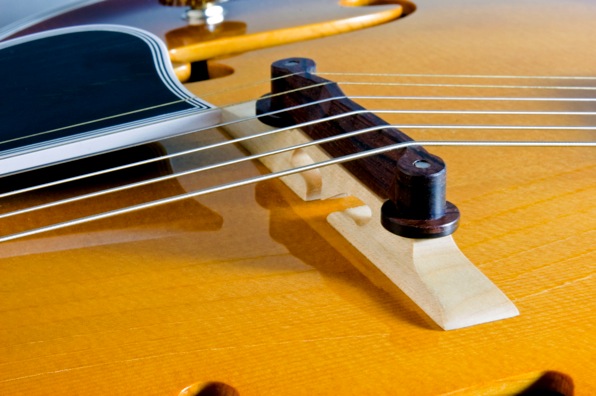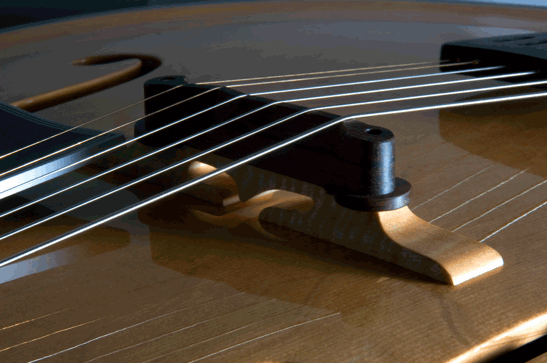
The bridge looks something like a typical adjustable arch top bridge, but it is actually quite different. The bridge must gather string energy which is predominately vibration from side to side in the plane of the strings, and propagate it through the bridge feet into the top, to drive the primary mono-polar (in and out), secondary cross dipole (side to side), and tertiary long dipole (end to end) movements of the top. Patrick McCarthy’s experience with string basses has taught me that a stiff bridge structure enhances bass because it has a higher resonant frequency and thus expends higher frequency energy in the bridge. Conversely, a flexible bridge structure enhances treble because it has a lower resonant frequency and thus expends lower frequency energy in the bridge. This bridge is designed to be balanced in stiffness and frequency response. The saddle is stiffer and the feet more flexible. This decrease in stiffness as energy moves from the strings through the structure enhances the gather/propagate and directional transition functions. It provides a better impedance match between the strings and top.
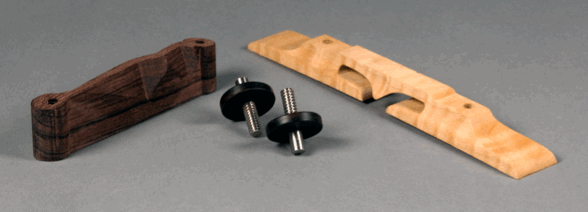
The bridge posts are titanium, which is relatively transparent acoustically. Compared to brass or steel posts, which act as acoustic filters, titanium transmits a full tonal spectrum. The wheels are two layers of Honduran rosewood, with the grain opposed at 90 degrees to prevent splitting, and are threaded and glued to the posts. The upper posts thread into the Honduran rosewood bridge saddle, and the unthreaded lower posts are free fitted into holes in the maple bridge foot that are reamed to size from the bottom side, so that they fit closely only at the top surface of the foot. This configuration is the opposite of typical adjustable bridges where the post threads into the bridge foot and the wheel turns freely on the post.
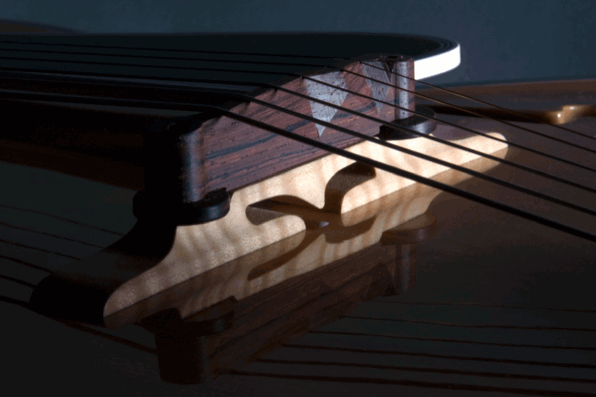
Threading the posts into the saddle, and fixing the wheels to the posts, gives a closely coupled saddle/post/wheel structure, which will settle firmly on the bridge foot under string tension. Patrick McCarthy refined this system for string bass bridges, and it is in use by many top symphony players. In Patrick’s wide experience, most basses sound better with this refined system of adjustment than they do with a traditional one piece bridge. The slight amount of play introduced between the lower part of the posts, and the bridge feet, allows the bridge to settle down more forcefully on the top under string tension, so that it can propagate string energy more thoroughly. I was dumbfounded when I replaced the original one piece bridge on my prototype arch top with this adjustable bridge. The sound was much larger; more volume, and richer harmonic content.
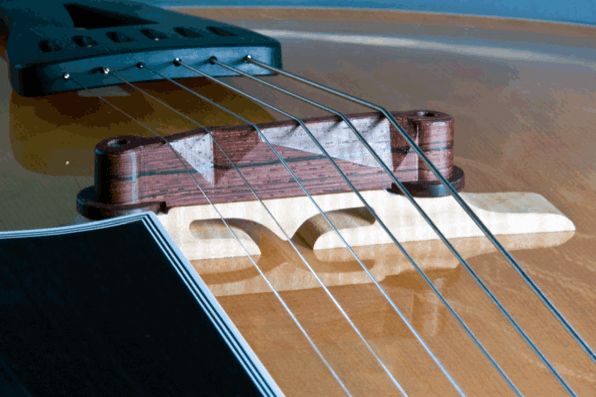
Two separate bridge feet, like those on the bridge of a violin family instrument, allow cross dipole and long dipole movements that are more complex. The two feet can move independently from side to side or end to end. The bridge is free to dance any way it wants to.
The saddle of the bridge is carved to compensate for string tension differences and provide correct intonation.
The bridge is canted slightly towards the tailpiece, to equalize the string angle and string tension on both sides.
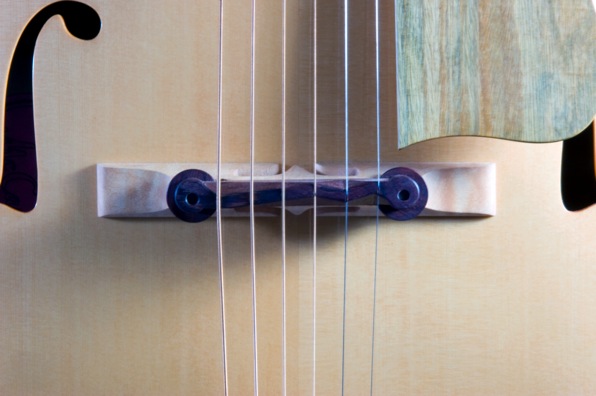
The feet are a bit wider (in the direction of the strings) than is typical for a bridge from the classic era, to enhance the long dipole movements.
